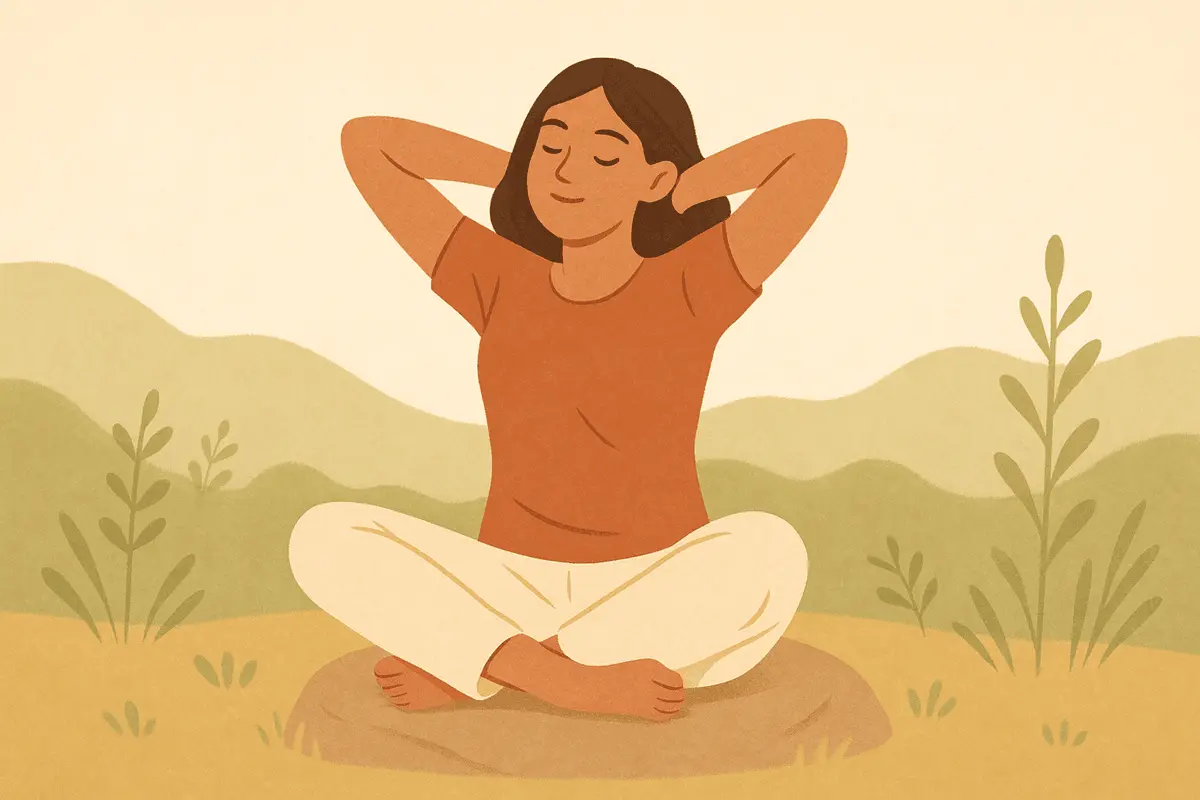Progressive muscle relaxation systematically tenses and releases different muscle groups to reduce anxiety, stress, and sleep difficulties through evidence-based, body-focused relaxation techniques.

Progressive muscle relaxation offers immediate, scientifically-proven relief that you can access anywhere, anytime. This systematic, body-focused technique involves intentionally tensing and then relaxing different muscle groups in a sequential manner, creating a structured approach to stress reduction and emotional regulation.
This evidence-based practice effectively reduces muscle tension, decreases anxiety, and promotes relaxation by directly intervening in physiological stress responses. Think of it like a reset button for your nervous system - just as you might restart a computer that's running too many programs, PMR helps your body shift from high-stress mode to calm, restorative mode. The technique facilitates deeper sleep and enhances emotional grounding through enhanced body awareness, providing a powerful tool for managing stress and improving overall wellbeing.
Progressive muscle relaxation works through multiple physiological and psychological mechanisms that create profound stress relief and relaxation.
Direct nervous system intervention occurs as PMR systematically activates the parasympathetic nervous system (your body's "rest and digest" mode) while reducing sympathetic nervous system activity (your "fight or flight" response). Think of it like switching your car from racing mode to cruise control - PMR helps your body shift gears from high-stress operation to calm, restorative function. This creates measurable changes in heart rate, blood pressure, and stress hormone levels.
Stress hormone reduction is well-documented, with studies showing PMR significantly reduces cortisol levels by 8-10% after intervention. Research demonstrates lower levels of post-intervention heart rate, anxiety, perceived stress, and salivary cortisol in participants who practice PMR compared to controls.
Muscle tension interruption breaks the physical manifestation of stress and anxiety. Just as clenched fists can make you feel more tense, relaxed muscles signal safety to your brain. Anxiety and trauma frequently manifest as chronic muscle tension, and PMR directly addresses this by systematically increasing awareness of when muscles are tense versus relaxed, promoting a natural relaxation response.
Enhanced body awareness develops through the deliberate focus on physical sensations during tensing and releasing. This heightened awareness enables early detection of stress-related tension, allowing for proactive intervention before anxiety escalates into full-blown stress responses.
Attention redirection occurs as the act of mentally focusing on tensing and relaxing each muscle directs attention away from stressors, worries, and racing thoughts. This cognitive shift interrupts anxious thought patterns and promotes present-moment awareness, similar to how focusing on a specific task can quiet mental chatter.
Sleep quality improvement happens because PMR helps shift the body from an alert state to a resting state. Research shows PMR significantly reduced anxiety levels and improved sleep quality in people with COVID-19, and can combat sleeplessness in various medical conditions.
Evidence-based effectiveness is supported by comprehensive research. A systematic review of 46 studies covering 3,402 adults found PMR effective in reducing stress, anxiety, and depression, with effect sizes for anxiety ranging from small to large impact.
"I can't feel the difference between tense and relaxed": This is common initially. Try exaggerating the tension slightly or holding it a bit longer (up to 10 seconds) to create a clearer contrast.
"I feel more anxious focusing on my body": Some people with trauma or anxiety sensitivity may feel initially uncomfortable. Start with just one or two muscle groups and gradually increase as comfort develops.
"My mind keeps wandering": This is normal and part of learning mindfulness. When you notice your mind drift, gently return attention to the current muscle group. The wandering will decrease with practice.
"I fall asleep before finishing": If using PMR for sleep, this is actually ideal. If you need to stay awake afterward, practice sitting up or earlier in the day.
"Some muscles cramp when I tense them": Reduce the intensity of muscle tension or skip problematic areas. The goal is noticeable tension, not maximum contraction.
"I don't feel relaxed afterward": Some people need several practice sessions to experience full benefits. Ensure you're spending adequate time (10-15 seconds) noticing the relaxation phase.